Have you ever found yourself lost in a sea of employee engagement benchmark data, trying to decode the numbers? If analyzing your employee engagement benchmark data has you stumped, read on for shortcuts and how-tos for better understanding your employee data.
Employee engagement benchmarks offer a quantitative approach to measuring and comparing engagement levels over time within their organization. They help businesses identify areas of strengths and opportunities in their employee experience strategies.
By implementing a data-driven employee engagement program, companies can make informed decisions, allocate resources effectively, and create targeted initiatives.
Let’s get started on this journey towards a more engaged workforce.
Take a self-guided tour of ContactMonkey
See how our key features can streamline your internal communications.
Take product tour

Why Employee Engagement Benchmarking Is Important
Employee benchmark data refers to the standardized metrics and statistics that allow organizations to compare their workforce engagement.
This type of data includes a range of key performance indicators (KPIs) like employee engagement scores, turnover rates, and productivity levels. Comparing your company’s benchmarks can give you valuable insights into how well your organization is performing relative to others in your industry, or compared to your past benchmarks for employee engagement. With these employee engagement analytics in your back pocket, you can develop effective strategies for employee retention, satisfaction, and productivity.
Additionally, benchmark data helps set realistic goals and track progress over time. It enables companies to identify trends in employee engagement, allowing them to proactively address potential issues before they escalate.
Types of Employee Engagement Data Benchmarks
Employee engagement benchmarks take various forms, each offering unique insights into workforce dynamics. When combined, key employee engagement metrics help organizations contextualize their data and set meaningful goals.
Here are the different types of employee engagement benchmarks to consider tracking and measuring at your organization:
Industry-specific employee engagement benchmarks
Different industries face unique challenges and opportunities when it comes to employee engagement. Industry-specific benchmarks allow organizations to compare their performance against competitors facing similar market conditions and workforce characteristics.
Start two-way conversations and employee feedback loops
Learn how to engage staff with pulse surveys, content ratings and reactions, custom polls, and more. Ready to send modern emails?
See engagement features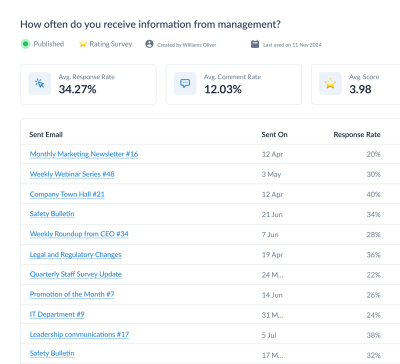
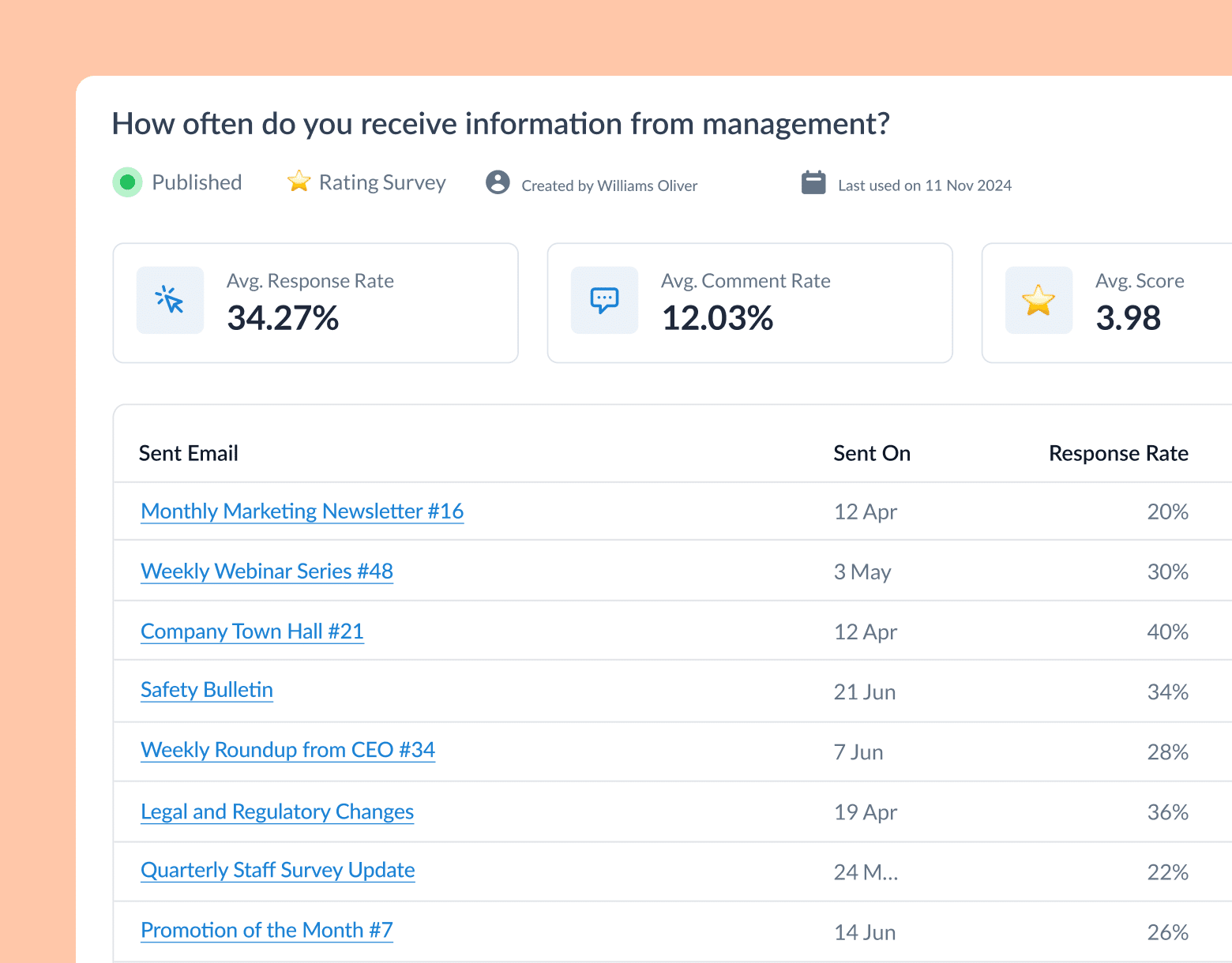
Demographic benchmarks
One important aspect of employee engagement benchmarks is demographic segmentation, which offers insights into how different groups perceive their work environment.
Some characteristics that might affect employee engagement include:
Age: Factors that drive engagement can vary across age groups. For example, younger employees (Millennials and Gen Z) may prioritize career development opportunities and work-life balance, while older employees might value job security and organizational stability.
Gender: Gender-based employee engagement benchmarks help identify any disparities in how men and women experience their work environment. Organizations can use this data to address any gaps and promote gender equity in engagement levels.
Ethnicity and culture: When organizations embrace diversity in the workplace, they create an environment where employees feel valued for their individual perspectives and experiences. Examine the inclusiveness of your company policies and cultural sensitivity in management practices.
Tenure: Employee engagement can also vary based on how long someone’s worked with an organization. For example, new employees may be more immediately engaged, whereas long-tenured employees may be more bought into the overall company mission and engrained values.
Leadership effectiveness benchmarks
Leadership plays a pivotal role in shaping company culture, direction, and overall team success. Benchmarks related to leadership measure factors like trust in management, communication effectiveness, and perceived support from team leads. As a leader of a team, it’s important to pulse-check and get updates on how your employees feel in the workplace.
Here are measurable KPIs and benchmarks specifically for assessing leadership effectiveness:
- Leadership 360-degree feedback rating: Involving employees in a 360-degree feedback survey is key to evaluating your leadership style. Try to target an average score of 4.5/5 in feedback from peers, subordinates, and superiors.
- Decision-making speed: Being a leader involves making quick decisions. Measure and improve the average time taken to make critical decisions, targeting a 10% reduction annually.
- Employee trust in leadership: In order to run an effective company, it’s crucial that your employees trust upper management. Aim for at least 85% of employees to express trust in leadership in surveys.
- Innovation and improvement initiatives: To push the organization forward, leadership should generate and implement at least 3 significant innovations or process improvements annually.
- Crisis management effectiveness: Running into challenges is inevitable at any workplace. It’s important that leaders can effectively handle stressful situations. Achieve a score of 4.5/5 or higher in post-crisis evaluations.
Location-specific employee engagement benchmarks
Factors influencing engagement can vary across different geographies. To effectively measure and enhance engagement, organizations rely on benchmarks for a comparative standard. Understanding the nuances between global, regional, and country-specific benchmarks is essential for developing strategies that resonate with diverse workforces.
- Regional benchmarks: These benchmarks offer more localized comparisons, accounting for cultural contexts, economic conditions, and regional work practices, offering the most precise local comparisons.
- National country-specific benchmarks: These drill down to the level of a single country’s national levels.
- Global benchmarks: They provide averages or standards derived from data collected across multiple countries and regions. These employee engagement benchmarks offer a broad overview of how companies worldwide are performing.
Employee engagement is not a one-size-fits-all metric. By leveraging a combination of these employee engagement benchmark types, organizations can gain a comprehensive understanding of their employee engagement landscape. This multi-faceted approach enables companies to identify areas of strength and opportunities for improvement, ultimately leading to more effective employee engagement action plans and strategies.
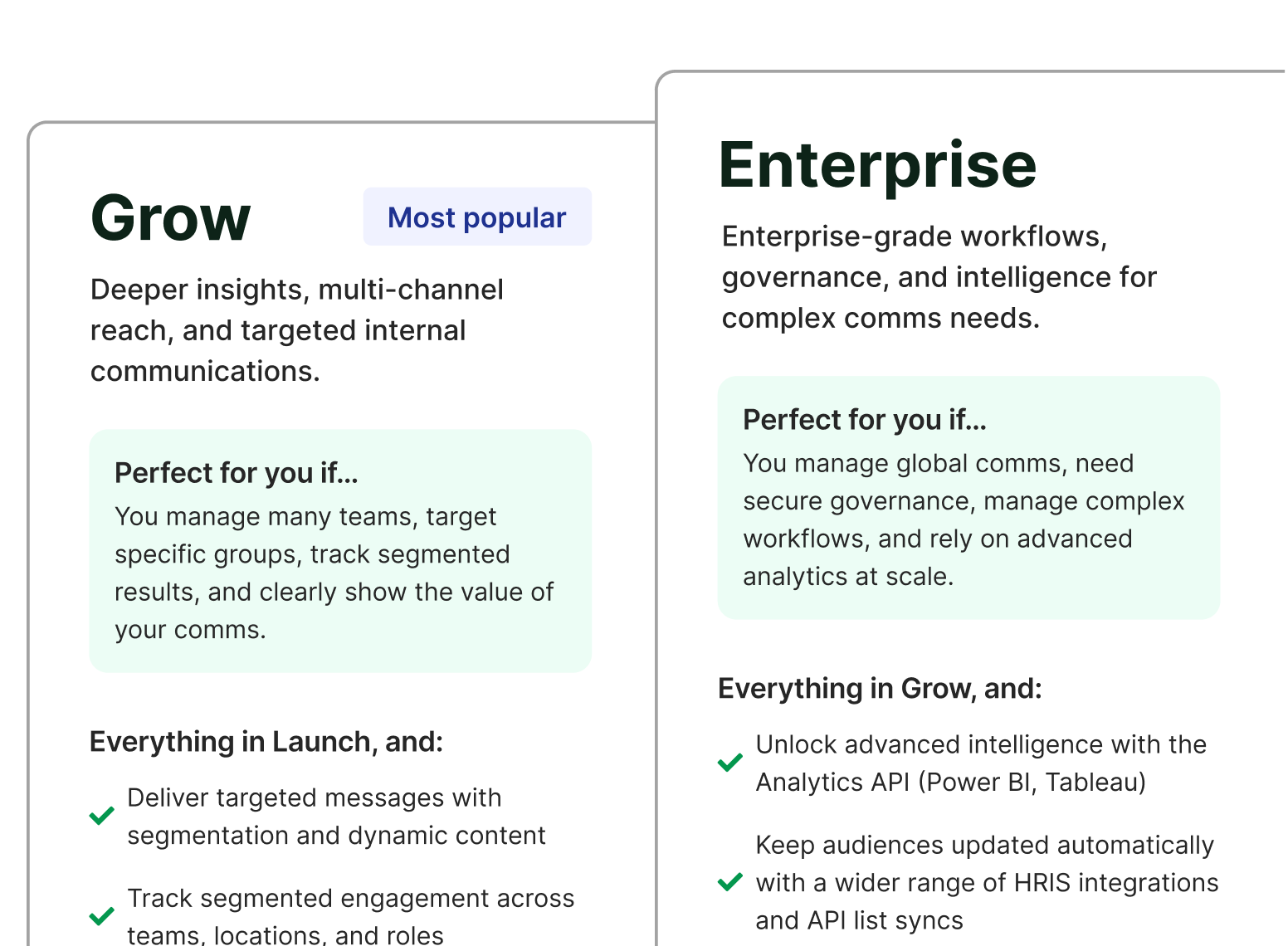
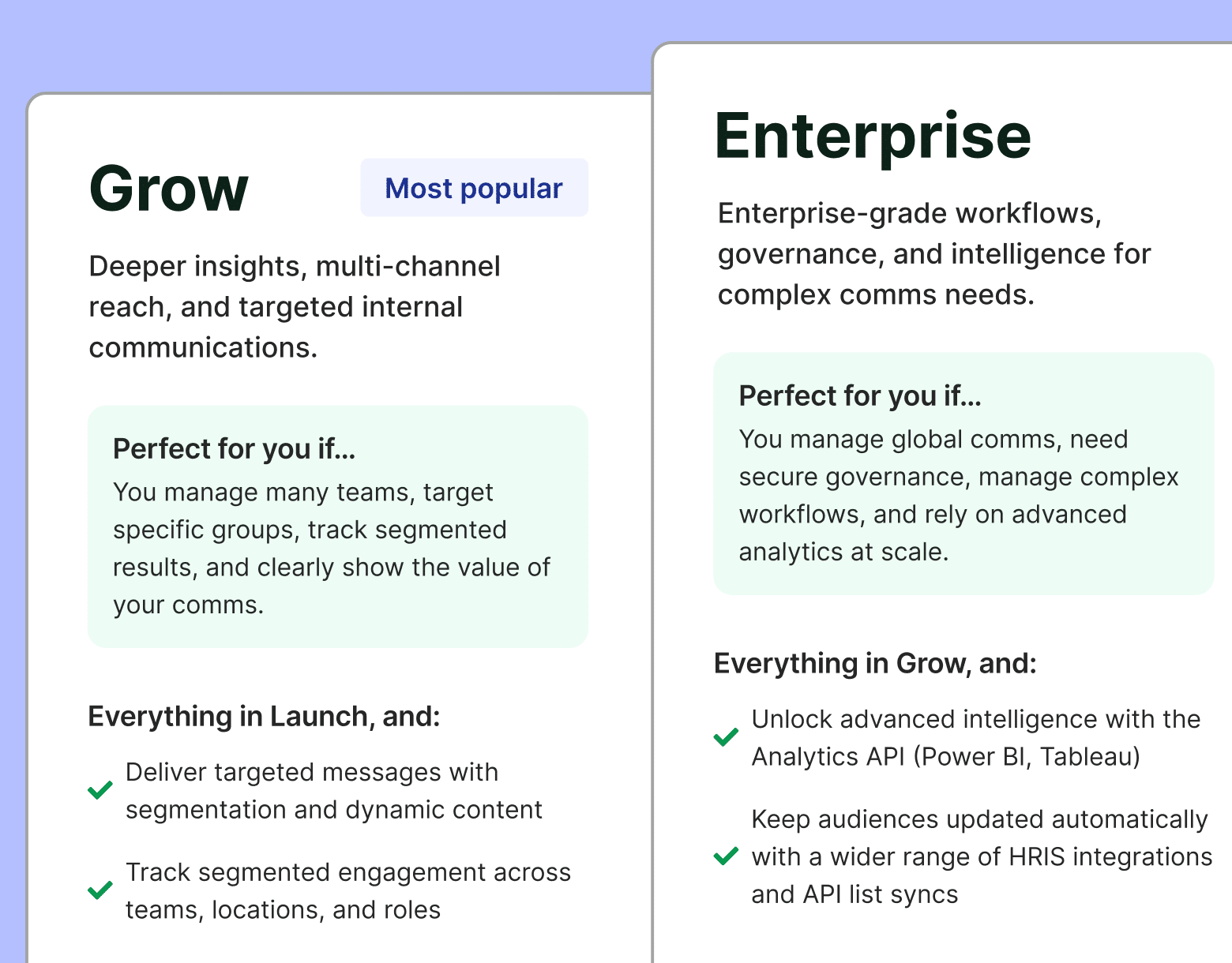
What Impacts Employee Engagement Benchmark Data?
Employee engagement benchmark data is influenced by several variables across industries, organizations, and even individual teams. Understanding what affects employee engagement at your company is the first step to improving the metrics that matter.
Here are some of the key factors that impact employee engagement benchmark data:
Company size: The scale of an organization can influence engagement levels in the workplace. Smaller companies have a greater tendency to foster closer relationships and more direct communication. While larger corporations may offer more resources and stability, they can struggle to maintain personal connections.
Industry: Different industries face unique challenges and opportunities that affect employee engagement. For instance, tech companies may see higher engagement due to innovative work environments while industries with high stress or physical demands might struggle more with engagement.
Organizational values: A company’s values, traditions, and overall atmosphere play a pivotal role in engagement. Strong, positive cultures that align with employee values yield higher engagement scores.
Leadership style: Leadership styles have a profound effect on employee engagement. The way managers interact with their teams, communicate expectations, and support their employees can either foster a highly engaged workforce or contribute to the cost of employee disengagement.
Work culture and environment: Work culture encompasses the shared values, beliefs, behaviors, and norms within an organization. It sets the tone for how employees interact with each other, approach their work, and perceive their roles within the company.
Career development opportunities: When organizations provide clear paths for growth, skill development, and advancement, valued employees will often reciprocate the sentiment and are motivated to produce high-quality work as a result.
Top Tips for Collecting and Using Engagement Benchmark Data
Effective collection and utilization of employee engagement benchmark data is necessary for organizations aiming to improve their workplace culture and productivity. Regular data collection pinpoints specific aspects of an organization that may be hindering engagement like unclear communication channels, lack of recognition, or insufficient career development opportunities.
So, now that you’ve collected the data, it’s time to analyze and segment your key insights. From there, you can communicate your findings to your teams, and come up with an action plan to improve any gaps.
Watch ContactMonkey LIVE in action
Join live demo
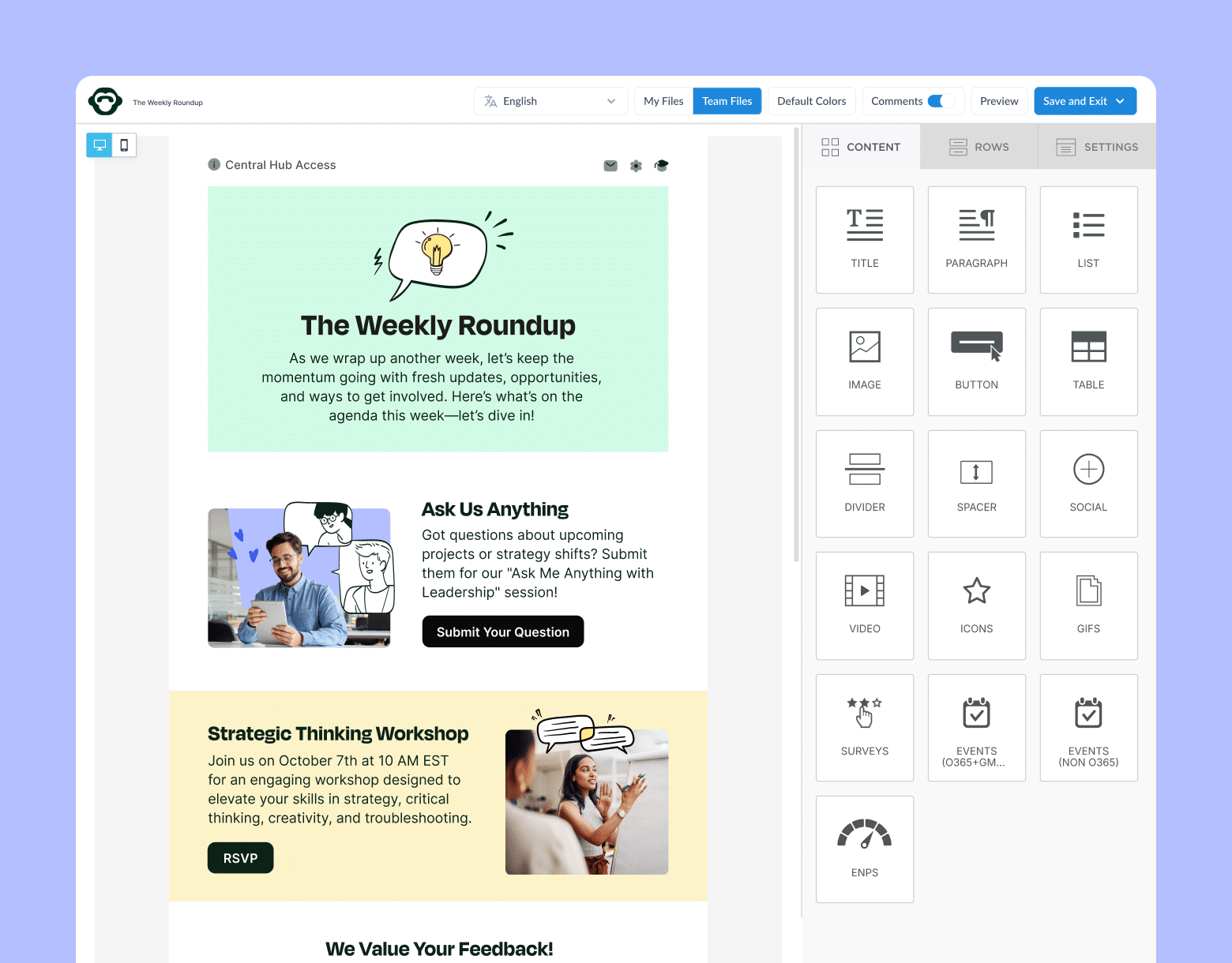
Here are some best practices to ensure you’re getting the most out of your engagement benchmarking efforts:
Craft effective employee engagement surveys for feedback
Nothing catches the eye like a well-crafted survey. Here are a few tips for creating your own employee feedback surveys so you can gather employee engagement benchmarks:
- Keep it concise and to the point: Limit your surveys to 20-30 questions to prevent survey fatigue.
- Use a mix of question types: For example, you can include multiple choice, open-ended questions for comprehensive insights, or Likert scales.
- Ensure your surveys are anonymous: Encourage your employees to answer as honestly as possible without feeling like their job is at risk.
- Tailor your questions to your organization: While using standardized questions allows for benchmarking, you can include company-specific queries to address unique challenges and track results against your own historical data.
- Track employee engagement survey benchmark data: Measure internal email analytics like heat maps, bounce rates, open rates, and more.
By following these best practices, organizations can create a robust system for collecting, analyzing, and acting upon employee engagement benchmark data. This approach not only helps in improving overall engagement levels but also contributes to creating a more responsive and dynamic workplace culture.
Remember, the key to successful benchmarking lies not only in gathering data, but in setting goals based on that data to drive positive change within your organization.
Discover how employee engagement technology trends are shaping the future of workplace engagement.
Gather employee engagement data frequently
To have historical data on hand, find different ways to collect consistent employee feedback. This ensures you can make evidence-based decisions in the future to help with employee engagement.
Here are some examples you can use for employee engagement survey benchmark data collection:
- Annual surveys: Conduct a comprehensive survey once a year to track long-term trends.
- Onboarding surveys: Ask new hires about their initial experiences during the onboarding process
- Exit surveys: Gather feedback on the reasoning behind why an employee is leaving so organizations can improve going forward.
Analyze employee benchmark data to get the most out of your results
There are a few different ways to boil down employee benchmark data. First things first, you’ll need to understand your overarching goals and then track what’s most important for your teams.
Here’s how to start taking proper employee engagement index benchmarks:
- Segment your data: Break down results by department, tenure, and demographics to identify specific areas for improvement.
- Compare with previous results: Track progress over time to measure the effectiveness of your initiatives.
- Benchmark against industry standards: Use external benchmarks to understand where you stand in your sector.
- Look for patterns and correlations: Identify which factors have the strongest impact on overall engagement.
Be transparent with your team about employee benchmarking data
Being transparent with your team about employee engagement benchmarking scores involves openly sharing the results and insights you’ve gained. Transparency into performance, processes, or products and how they compare to industry standards or competitors can foster trust and collaboration, and drive continuous improvement.
Here’s how to approach it:
- Share results with the team: Communicate your findings with all employees to build trust and show commitment to development.
- Prioritize areas for improvement: Focus on 2-3 key areas or goals that will have the most significant impact on employee engagement (For example: training or onboarding).
- Involve employees in solution development: Create cross-functional teams to address identified issues.
- Set SMART goals: Establish Specific, Measurable, Achievable, Relevant, and Time-bound objectives for each initiative.
- Schedule follow-ups: Continuously monitor progress and adjust strategies as needed.
2025 internal email benchmarks are in!
See where you stand. Download our report to measure your performance.
Get the guide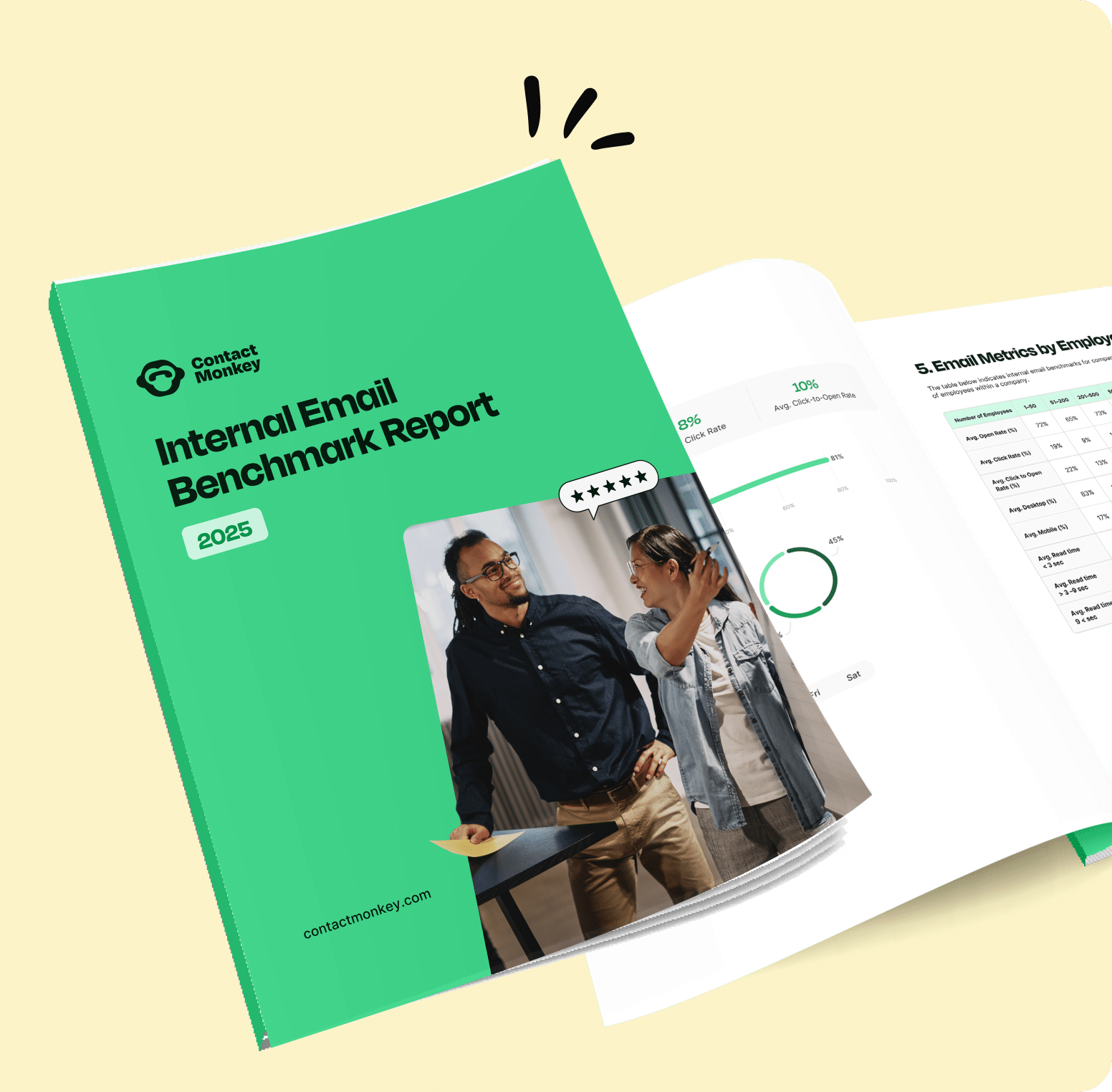
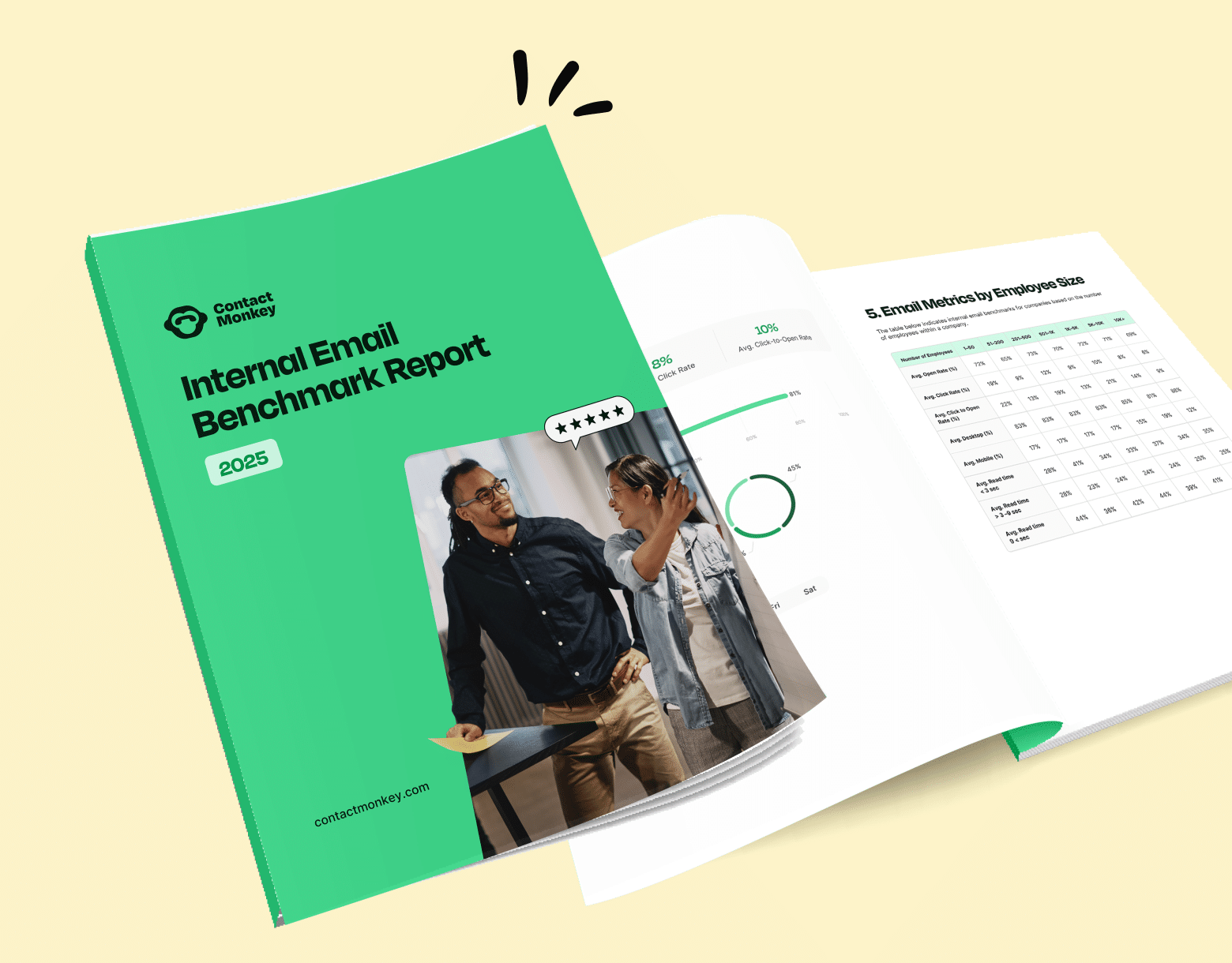
What Are Employee Engagement KPIs?
Employee engagement benchmark data and KPIs refers to the historical averages or standard metrics used to assess and compare employee engagement levels across different organizations, industries, and time periods. By tracking employee engagement metrics, companies make informed decisions on how to improve workplace culture, boost performance and productivity, and improve employee job satisfaction.
How to Measure Employee Engagement KPIs
Measuring employee engagement benchmarks can be a challenge for many organizations since it’s not always easy to quantify. Thankfully, there are some KPIs and employee engagement analytics you can use to measure engagement in the workplace.
Here’s how you can measure your employee engagement benchmark data:
Define your objectives: Understand what aspects of engagement are most important for your organization. This could include factors like job satisfaction, communication effectiveness, employee well-being, or opportunities for growth.
Examine your historical data: Your historical data provides a reference point for setting achievable engagement goals. With these metrics, you can track any patterns and trends, like seasonal dips in engagement.
Set new goals and KPIs: Based on your findings and insights, you can implement new goals and KPIs for your company. For example, you can track survey-based metrics like employee net promoter score or pulse surveys, or monitor email engagement with link clicks, email open rates, click-through rates, click map reports, and opens by device or location.
Using ContactMonkey for Employee Engagement Benchmarking and Optimization
ContactMonkey offers a powerful suite of tools designed to revolutionize your approach to employee engagement benchmarking. By providing robust features for tracking internal email engagement metrics and surveying employees, ContactMonkey empowers organizations to collect actionable data they can use to set realistic, data-driven benchmarks for their employee engagement initiatives.
With the ContactMonkey dashboard, you can see real-time visualizations of employee clicks, opens, read time, and more for your employee engagement email campaigns. You can also add customizable surveys and pulse checks to your newsletters with the drag-and-drop email builder, making collecting and analyzing employee feedback effortless. With our in-depth tracking and analytics, you can quickly identify trends and areas of concern and set benchmarks for improvement as you act to rectify employee concerns.
By leveraging ContactMonkey for employee engagement benchmarking, you’re not just collecting data – you’re gaining a strategic partner in your quest to build a more engaged, productive, and satisfied workforce. Book a demo with our employee engagement experts today to learn our cutting-edge tools and strategies so you can reap the rewards of your employee engagement benchmarks.



